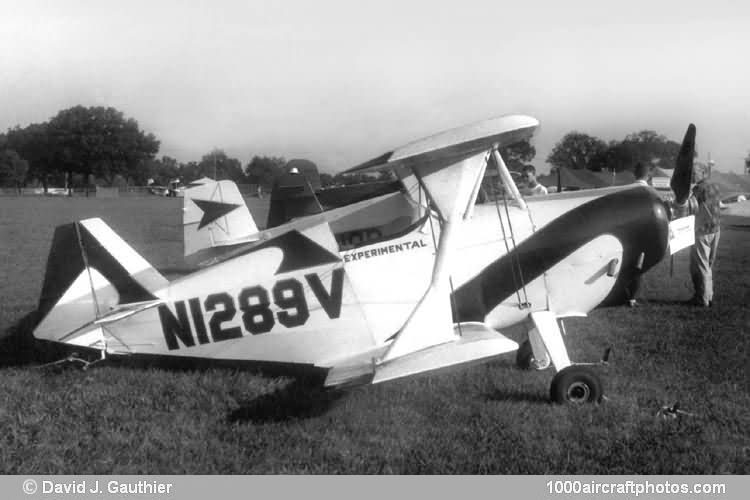The BF3 was a biplane of small span and its design was started in 1960. At a cost of about $2,000 the aircraft was constructed in two years of spare-time work, and powered by a Lycoming engine it flew for the first time on June 16, 1962."
Wings: Braced and staggered biplane. Wing section NACA 23012. Aspect ratio 4. Constant chord of 3 ft 6 in (1.07 m). Dihedral 3°. Incidence 45'. Sweepback of 6° at quarter-chord on upper wing only. Spruce spars and truss ribs, covered with Ceconite. Torque-tube actuated ailerons, on lower wings only, have aluminum structure and fabric covering. No flaps.
Fuselage: Truss structure of chrome-molybdenum steel tube, fabric covered.
Tail unit: Wire-braced structure of chrome-molybdenum steel tube, fabric covered.
Landing gear: Non-retractable tail wheel type. Hayes wheels, size 5.00 x 4 on main units, which have cantilever spring steel legs. Steerable tail wheel. Hayes drum-type brakes.
Power plant: One 125 hp modified Lycoming O-290-G four-cylinder horizontally-opposed air-cooled engine, driving a two-blade two-position Sensenich propeller. Fuel tank in fuselage, capacity 18 gal (68 l). Fuel system suitable for inverted flight. Oil capacity 2 gal (7.5 l).
Accommodation: Single seat in open cockpit.
Span: 14 ft 4 in (4.37 m)
Length: 14 ft 0 in (4.27 m)
Height: 5 ft 0 in (1.52 m)
Wing area: 90 sq.ft (8.36 sq.m)
Empty weight: 583 lb (264 kg)
Max take off weight: 1,000 lb (454 kg)
Max level speed: 160 mph (257 kmh)
Max cruise speed: 130 mph (209 kmh)
Econ cruise speed: 120 mph (193 kmh)
Stall speed: 55 mph (89 kmh)
Climb: 2,500 ft (762 m)/min at sea level
Range: 400 miles (640 km)
